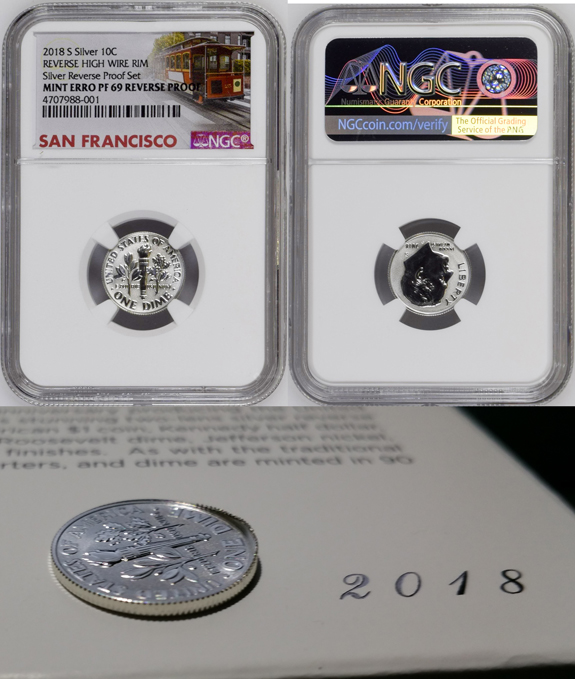Error experts, is this a rare mint error?
 Realone
Posts: 18,519 ✭✭✭✭✭
Realone
Posts: 18,519 ✭✭✭✭✭

Thank you!
1
 Realone
Posts: 18,519 ✭✭✭✭✭
Realone
Posts: 18,519 ✭✭✭✭✭

Thank you!
Comments
It’s not a rare error, but it is rare when you find it on a 2018 silver reverse proof!
Modern errors of any kind are generally harder to come by due to improved manufacturing and screening processes. And proofs are given special scrutiny in general, though inevitably proof errors do get out. Plus, didn’t these come in the hard-cased proof sets? Anything out of normal form would normally have prevented the coin from being placed within the gasket of the set.
You could pick out many random sub-sets of American coinage, whether it be a certain series or a certain time period, on which this would be a difficult error to find. I am merely saying that this is a difficult type coin on which to find this error.
I think it should be called an "High Finned Rim".
I have a state quarter that has the same error. PCGS labels it as high finned rim.
I'm with NGC on this one. Back in 1907, when they made the $20 High Relief coins, "fins" were found on fish, rockets, cars, etc. They did not exist on coins without a fish in the design. That's why the examples that look similar to the OP's dime were said to have WIRE RIMS.
I'm still focused on "Mint Erro" on the label.
With all the text on that line couldn't they find another word to abbreviate?
Fins were not on cars in 1907, although a $5 bill was sometimes called a "fin" then. OP is lucky that the finning was not such that it was vulnerable to being damaged by the fangs on the holder.
Keeper of the VAM Catalog • Professional Coin Imaging • Prime Number Set • World Coins in Early America • British Trade Dollars • Variety Attribution
Nice coin!
I'm sure it's "rare', but finned coins generally have very low demand, so its value is probably low. I'd estimate around $100 or less.
I guess I should check my proof sets for 'high wire rims'.... never looked for that....I thought all the 'high wire' stuff was done by the Wallendas - Funambulists extraordinaire...
 Cheers, RickO
Cheers, RickO
It's a double error, with NGC calling it an "ERRO" coin.
Pete
that IS a rare mint error
Fin is also used in metallurgy. It describes a thin ridge of metal that, when under a pressure load, is squeezed through the opening between 2 dies, rollers, or parts of a mold.
RMR: 'Wer, wenn ich schriee, hörte mich denn aus der Engel Ordnungen?'
CJ: 'No one!' [Ain't no angels in the coin biz]